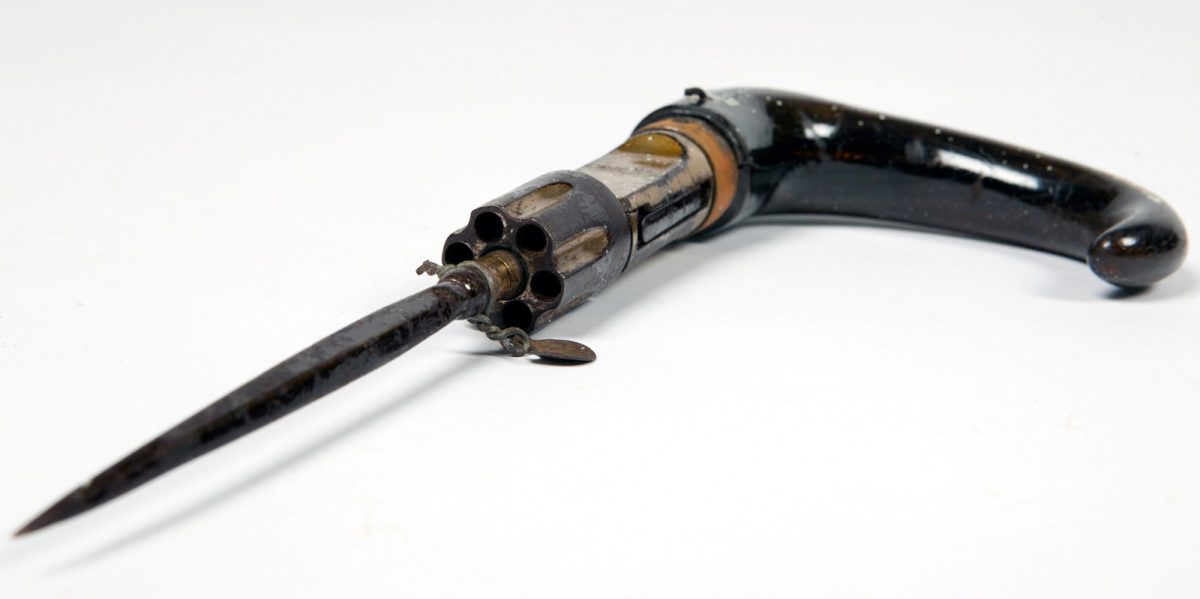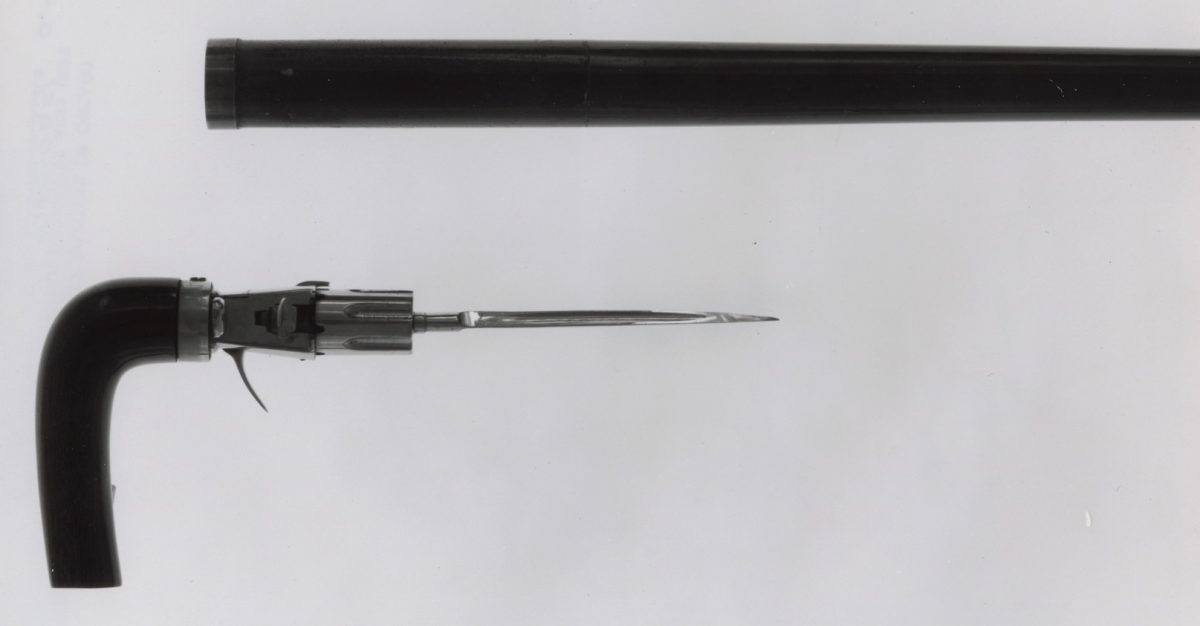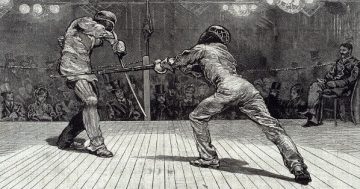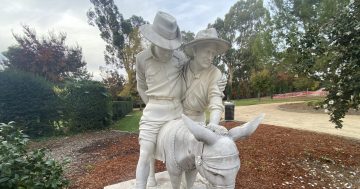
A walking stick pistol confiscated from an ‘enemy alien’ in Wagga in 1915. Photo: Museums of History NSW.
For anyone with an interest in Australia’s wild colonial past and the seedy underbelly of its cities, you can’t go past a visit to Sydney’s Justice and Police Museum.
Located in Circular Quay, the unassuming old sandstone building is a treasure trove of dangerous artifacts and curious collections, some of which were captured in the Riverina.
Among the multitude of weapons is an identical pair of knives and a deadly walking stick, that were confiscated in Wagga Wagga in the early 20th century.
A syndicated story from The Daily Advertiser in May of 1920 describes some of the weapons in the collection.
“Revolvers and knives are there by the dozens, as well as an ugly-looking pile of knuckle-dusters, slingshot, life preservers and loaded sticks,” the story reads.
“By far the most curious weapon is contained in a hollow walking stick taken from an enemy subject in December 1915.”
The story goes that in the same year that Australia entered World War I, a “suspicious” man named Theodore Mickel arrived in town by train and checked into a hotel.
It seems that the landlord didn’t like the look of him and called the police.
After a late-night interview with Mickel, constables learned that he was a South Australian of German descent (hence an “enemy subject”) and his unusual walking stick was seized.
“On unscrewing the handle of the stick, a revolver with a short bayonet attached is revealed,” reports the Advertiser.
“The handle of the stick becomes the butt of the revolver. The bayonet, a straight one with a keen point, projects beyond the muzzle.”
The horn-handled canes with hidden ‘stiletto and pepperbox pistol’ were a French creation and popular among Europeans from the mid-19th century.
While it seems Mickel was let off with a warning, the consequences for an ‘enemy alien’ – even an Australian-born one – carrying a weapon in the later years of the war would have been serious.
Around 7000 people were held in internment camps in Australia during the war, the majority of them being Australian and British-born civilians of German descent.

A similar French-made walking stick/pistol/bayonet is held at the Art Institute of Chicago. Photo: Art Institute of Chicago.
The other items that caught the reporter’s eye were displayed with a warning against relying on circumstantial evidence.
In around 1916, a Wagga store was robbed and the thieves left behind a distinctive pocketknife.
An Aboriginal tracker at the crime scene recognised the knife as one he had recently given to his nephew and the police soon paid him a visit.
Fortunately, the young fella had his identical knife with him and was able to produce it to prove that he was not linked to the crime!
The two matching knives and the walking stick/revolver/bayonet remain part of the Justice and Police Museum collection.










